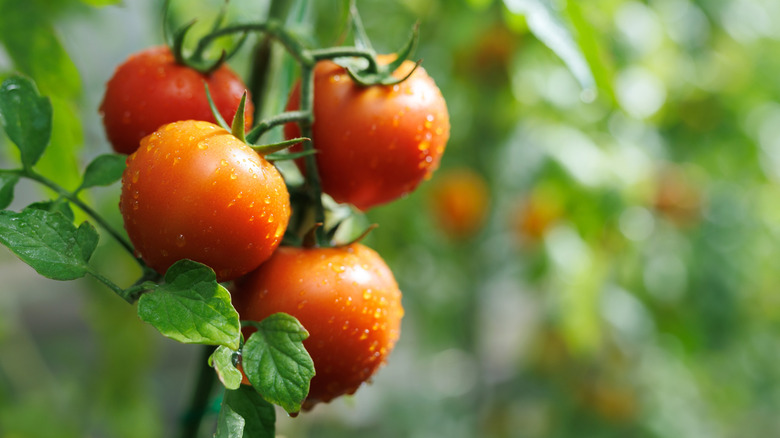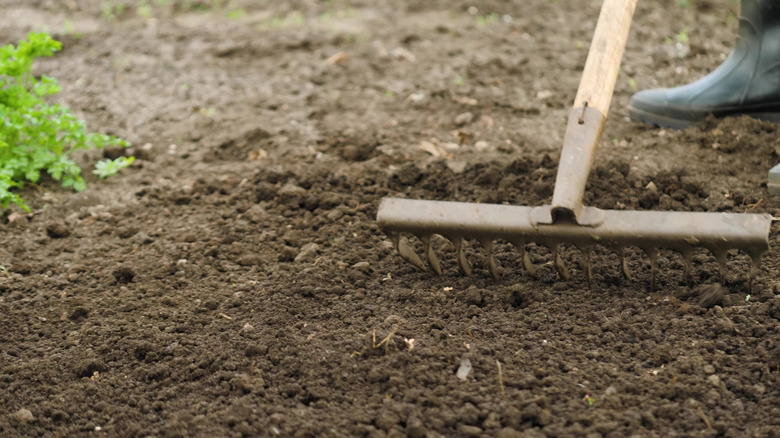Why Soil Matters When Growing Tomatoes In Your Garden
We may receive a commission on purchases made from links.
While not particularly difficult to grow, tomatoes still have a handful of requirements you'll need to meet if you want them fruitful, healthy, and delicious. Food Republic spoke with Michael Clarke, landscape architect, horticulturist, and founder of Yardwork, to learn why soil may be the most important factor to growing these savory fruits.
"The soil should be well-draining yet retain moisture well since tomatoes need consistent moisture, but soggy soil leads to root rot," Clarke said. "Additionally, this will promote deep root growth and prevent diseases like blossom-end rot." Just about every type of tomato has complex roots that not only greedily soak up water, but also nutrients. Keep an eye out for wilting or yellowing leaves, limp stems, or fruit dying before it ripens, as all of these are signs it's time to water your vegetable garden. Clarke recommended maintaining high levels of phosphorus, potassium, calcium, and magnesium for the best possible produce, something easily managed with the right fertilizer or compost.
"The soil should also be rich in organic matter[,] which improves soil structure and microbial life and enhances the flavor of the tomatoes, while boosting nutrient uptake, especially potassium and calcium[,] which are key for fruit development and taste," Clarke continued. Maintaining both nutrient and moisture levels is more important for indeterminate and determinate tomato plants, as they'll grow continuously until the first frost. This is easier in some types of soil than others, but fixing up a garden patch to grow great tomatoes is easy, provided you know how.
How to correct soil and grow tomatoes
Tomatoes come in enough variety that it's easy to find a breed that can tolerate your garden's temperatures. Still, even if you fertilize and water your garden religiously, you'll need to prep it beforehand to ensure your tomatoes don't just survive but thrive.
"Compacted [or] clay soil can lead to stunted growth and yellowing leaves," Michael Clarke explained. "It can be corrected by adding compost and coarse sand to improve texture and drainage." Even if you own a gas-powered tiller, clay soils don't drain particularly well, so mixing in a bit of coarse material helps even out the drainage and keep your roots moist, not soggy. When you dig a hole for your tomatoes, be sure to load it up with plenty of compost to not only give it nutrients but to keep the clay from clamping down on the roots and preventing them from spreading out.
"Nutrient deficiencies will lead to pale leaves and low yields," said Clarke. "Use balanced organic fertilizers or compost tea to improve the nutrient profile. Additionally, an alkaline pH will lead to poor nutrient uptake and can be corrected by elemental sulfur or peat moss." Unless your soil is particularly sandy or acidic, it probably has enough magnesium and calcium already. Oftentimes, a standard 10-10-10 fertilizer is all you need to feed your tomatoes throughout a growing season and get the most delicious produce possible.


